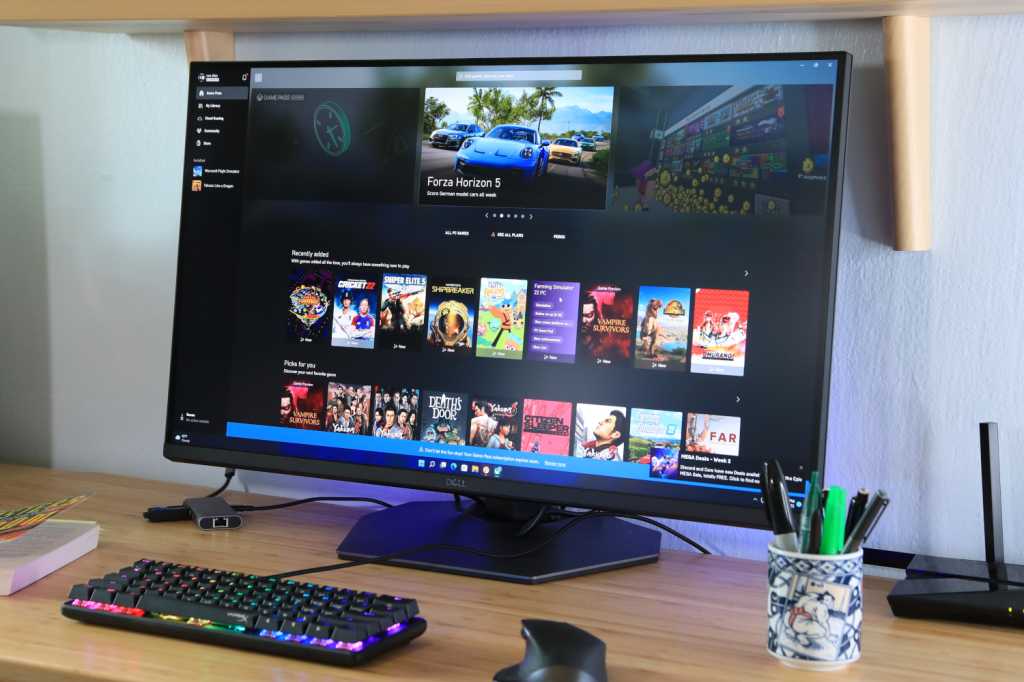When it comes to PC gaming, not all monitors are created equal. While any standard display can function, those designed specifically for gaming offer superior performance. These gaming monitors come equipped with advanced technology, delivering higher refresh rates, improved contrast, and exceptional motion clarity compared to basic productivity monitors. Below is a curated list of some of the top gaming monitors currently available, based on extensive testing.
MSI MPG 341CQPX – Best Gaming Monitor
The MSI MPG 341CQPX is a 34-inch ultrawide monitor featuring a Samsung QD-OLED panel, known for its 240Hz refresh rate and outstanding motion clarity. It supports VESA Adaptive Sync, making it compatible with both AMD FreeSync and Nvidia G-Sync. The monitor also offers a USB-C port with up to 98 watts of Power Delivery, ideal for charging devices. However, the stand is cumbersome, and SDR brightness could be improved. Priced at approximately $850, it represents good value given its performance.
Dell G2724D – Best Gaming Monitor Under $300
The Dell G2724D provides excellent value as a budget-friendly gaming monitor. Featuring a 27-inch IPS LCD panel with 1440p resolution and a refresh rate of up to 165Hz, it offers an engaging gaming experience with broad Adaptive Sync support. Although it lacks USB connectivity and HDR performance is subpar, the monitor’s attractive design and solid motion clarity make it a great choice for gamers on a budget, typically priced around $300.
Pixio PX248 Wave – Best Gaming Monitor Under $150
Available at $149.99, the Pixio PX248 Wave impresses with its stylish design and good motion clarity. With a 200Hz refresh rate and solid color accuracy, it remains a strong contender in the budget category. Its limited adjustability and few video inputs are drawbacks, but the monitor’s built-in speakers and attractive aesthetics make it a top pick for budget-conscious gamers.
MSI MPG 272URX – Best 4K Gaming Monitor
The MSI MPG 272URX is a 26.5-inch 4K monitor that excels with its 240Hz refresh rate and stunning image quality. The QD-OLED panel provides exceptional contrast and vibrant colors, making it a prime choice for both gamers and creative professionals. Coping with a price tag of around $1,099.99, this monitor is tailored for those wanting high-resolution gaming with smooth motion.
Gigabyte GS34WQC – Best Budget Ultrawide Gaming Monitor
This 34-inch ultrawide display features a resolution of 3440×1440 and supports a refresh rate of up to 120Hz (overclockable to 135Hz). The Gigabyte GS34WQC provides an excellent contrast ratio and solid color performance, making it ideal for immersive gameplay. While the stand requires manual assembly, its impressive performance at around $329.99 places it among the best budget ultrawide options.
LG Ultragear 45GX950A-B – Best Ultrawide Gaming Monitor
With class-leading 5K2K resolution, the LG Ultragear 45GX950A-B is designed for gamers who prioritize immersive visuals. Priced at $1,999.99, it showcases strong SDR image quality and HDR brightness. However, its design may not meet the expectations set by its price point, and its USB connectivity options are limited, which may deter some users.
Asus ROG Strix XG27AQDMG – Best HDR Gaming Monitor
The Asus ROG Strix XG27AQDMG is distinguished by its impressive HDR capabilities at a price of $749. It features a third-generation LG WOLED panel, delivering excellent HDR performance and deep contrast levels. While it lacks USB-C connectivity and has some limitations in SDR performance, the monitor supports adaptive sync technologies for smooth gaming.
How We Test Gaming Monitors
Each monitor is evaluated using a Datacolor Spyder X2 Ultra calibration tool, measuring various metrics such as brightness, contrast, and color accuracy. Gaming performance is assessed through popular titles, and we analyze motion clarity, design, and overall build quality. This thorough testing ensures reliable recommendations for gamers seeking optimal performance.
What to Look for in a Gaming Monitor
Key considerations include resolution, refresh rate, and connection options. Most monitors now feature resolutions of 1080p, 1440p, or 4K, with higher resolutions providing sharper images but requiring more powerful hardware. Refresh rates of 144Hz or higher enhance motion fluidity and reduce input lag, while DisplayPort and HDMI 2.1 connections offer superior compatibility for gaming setups.

